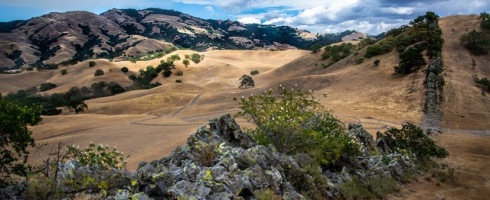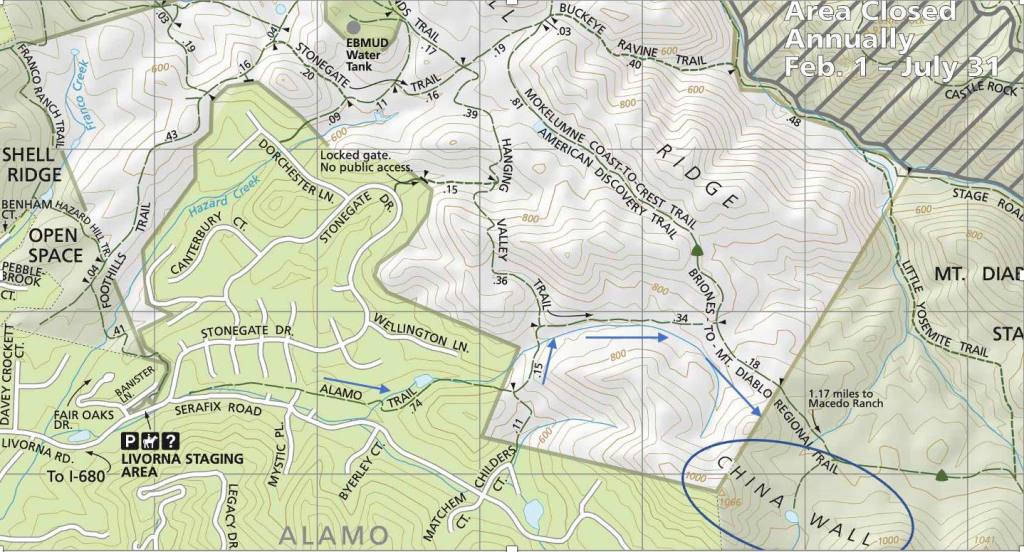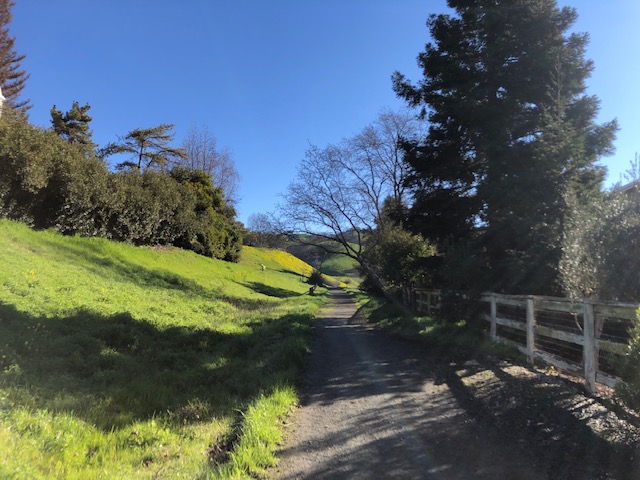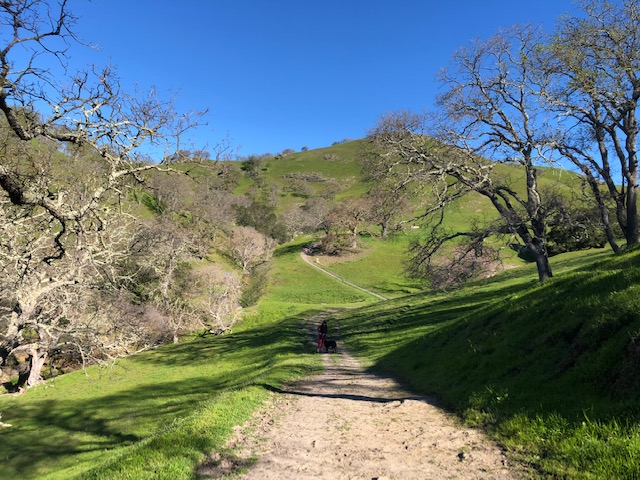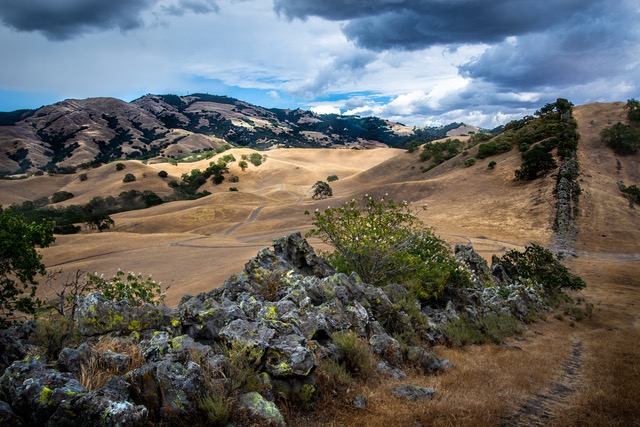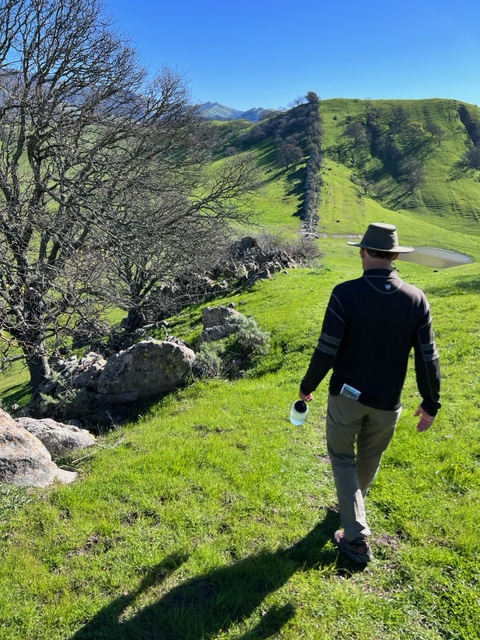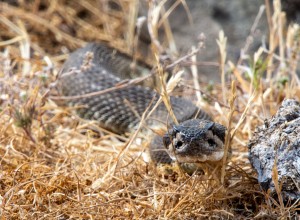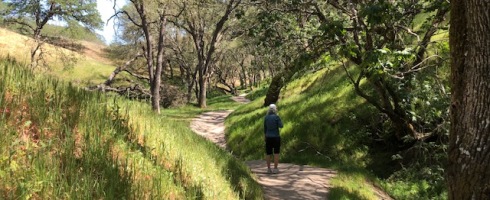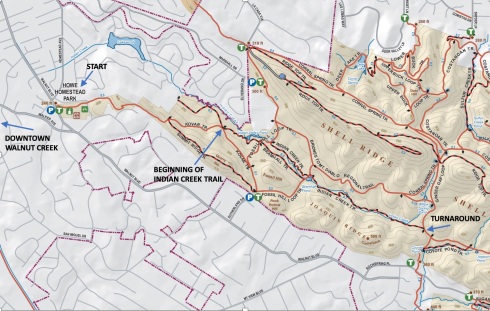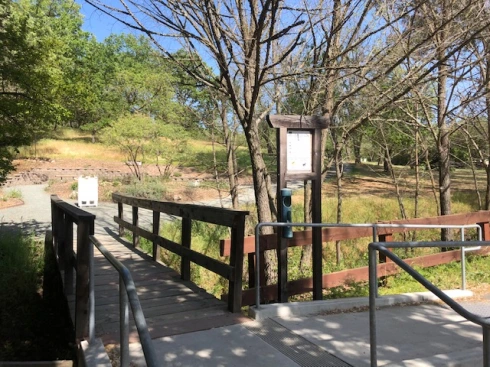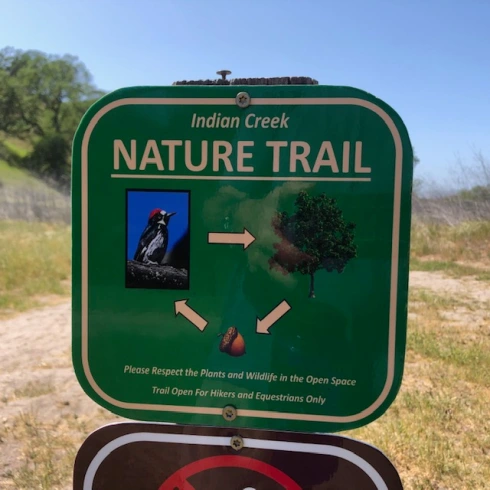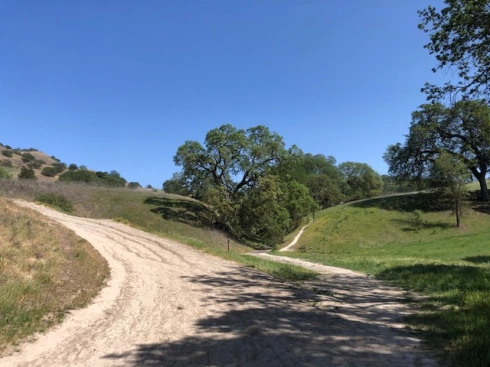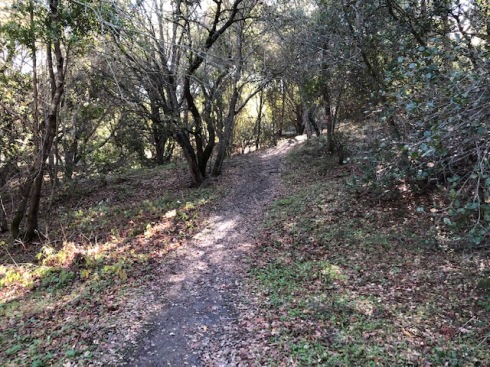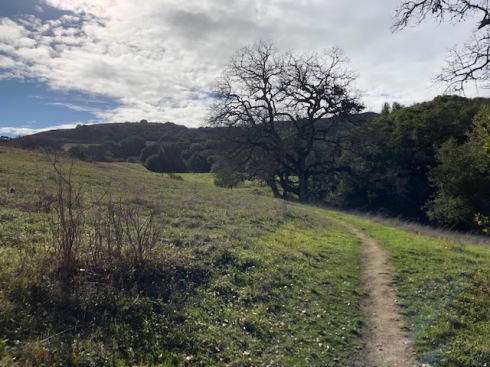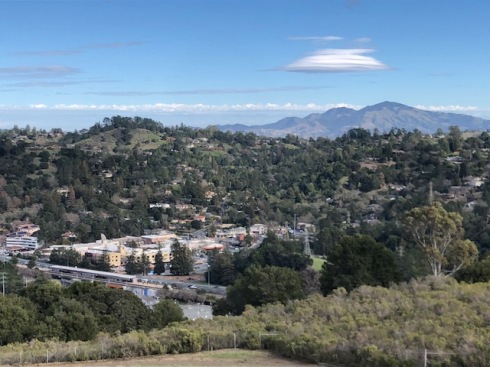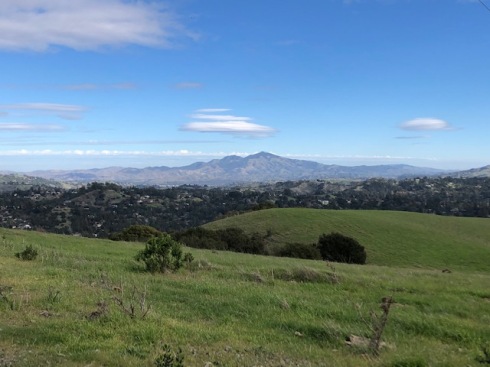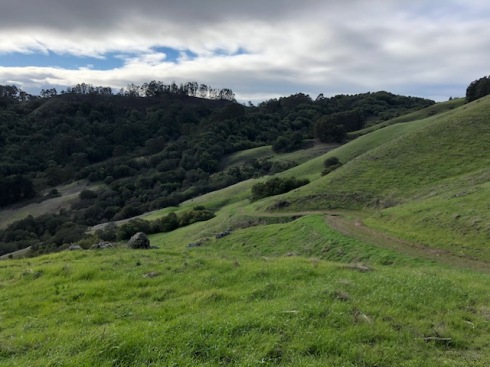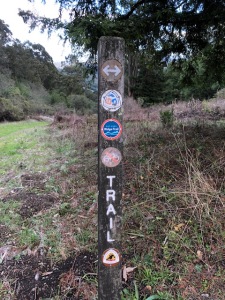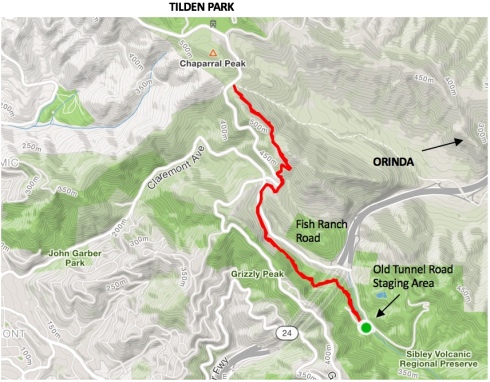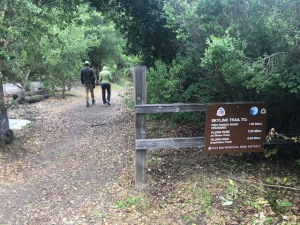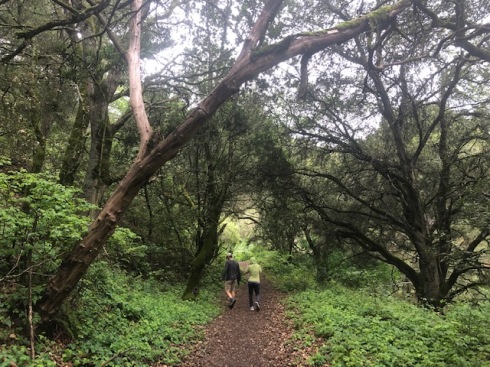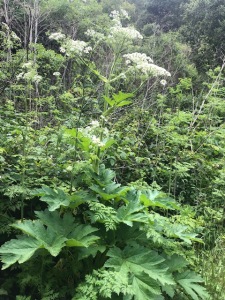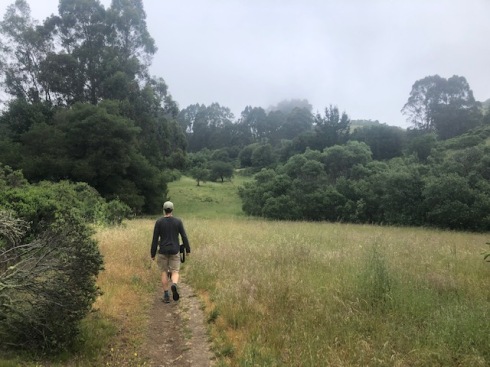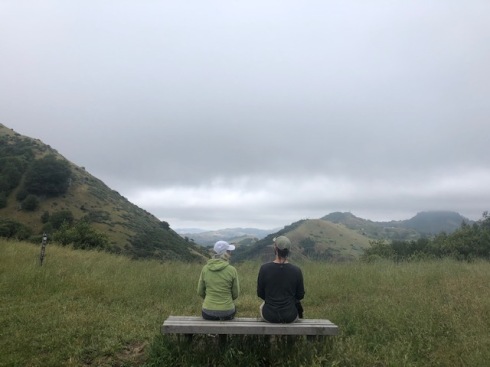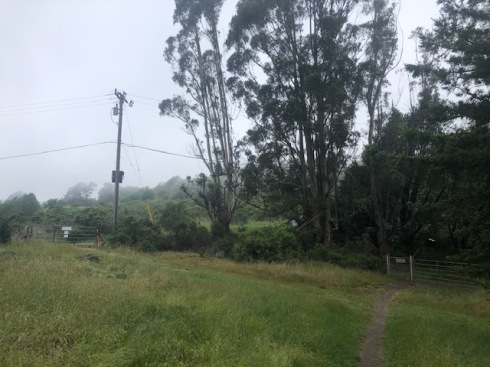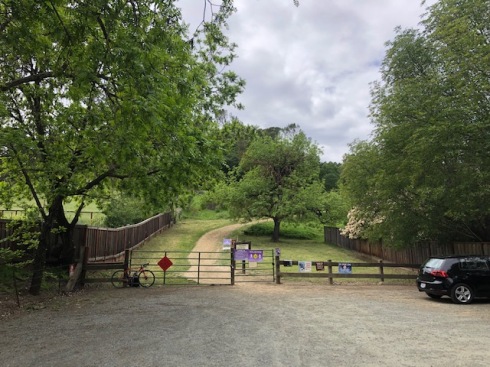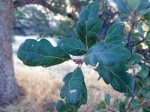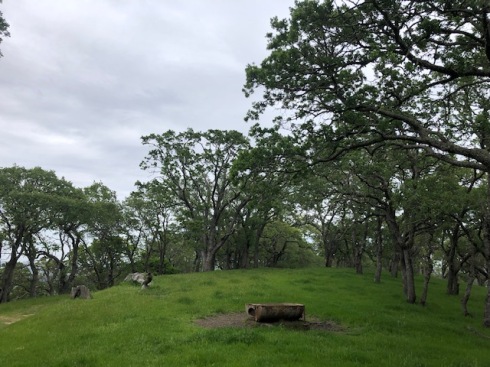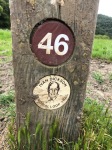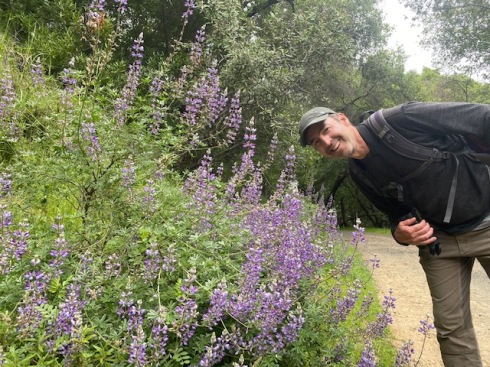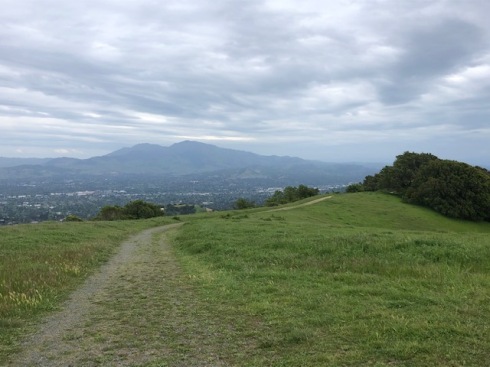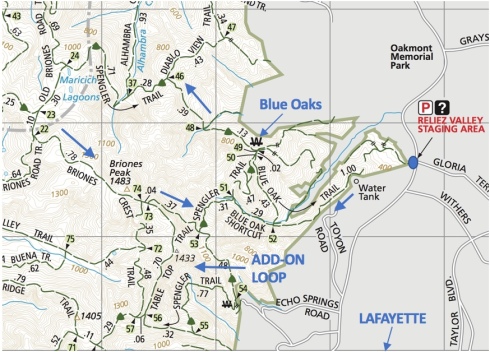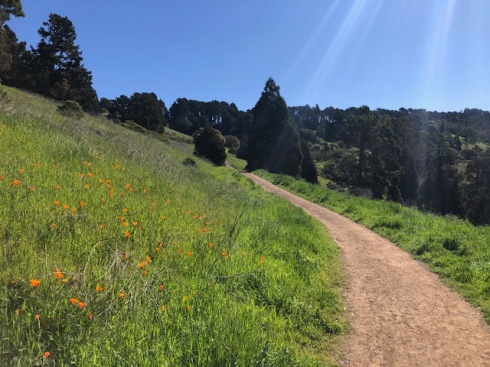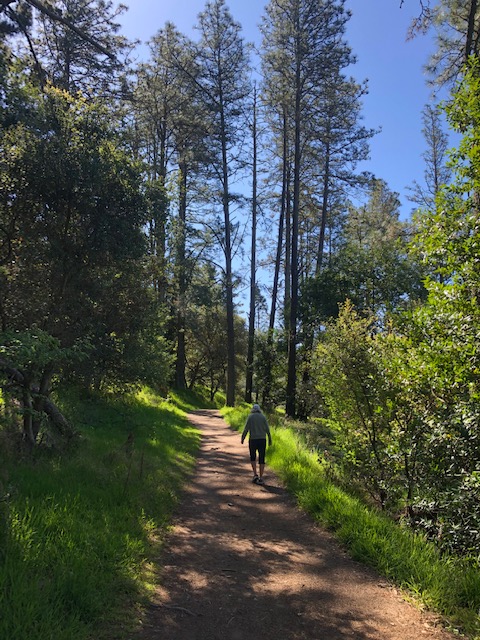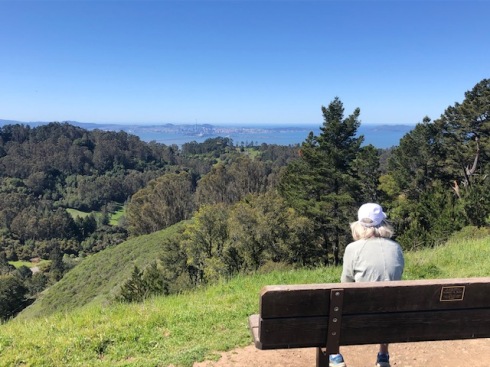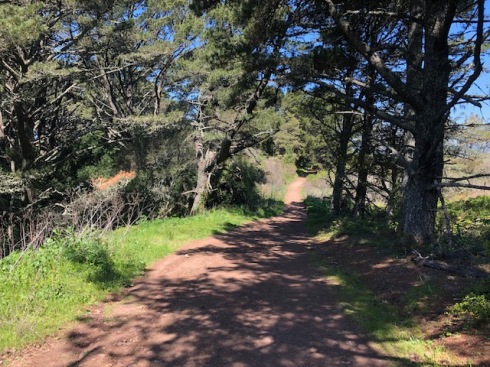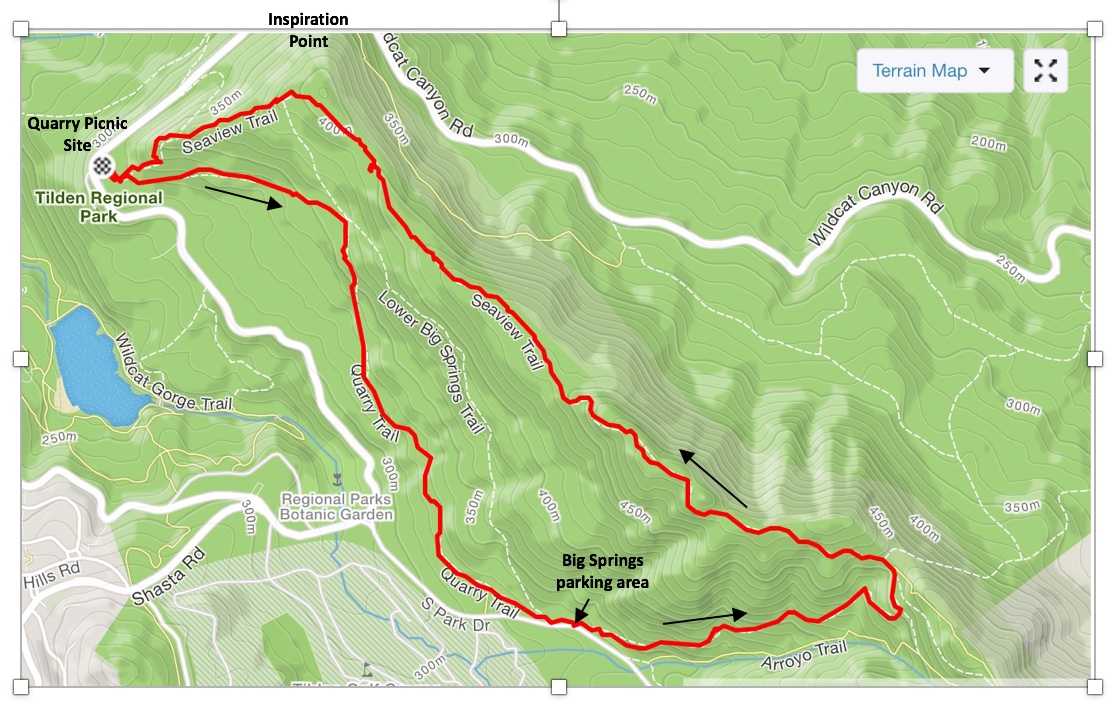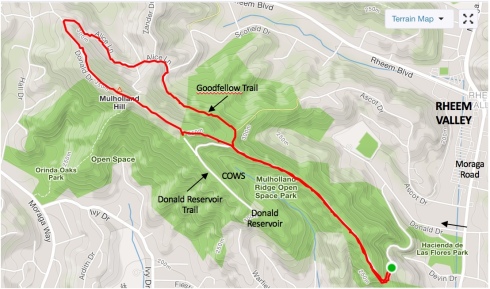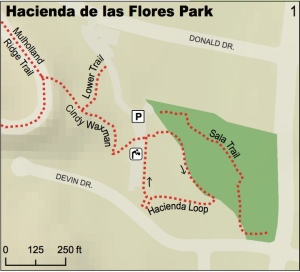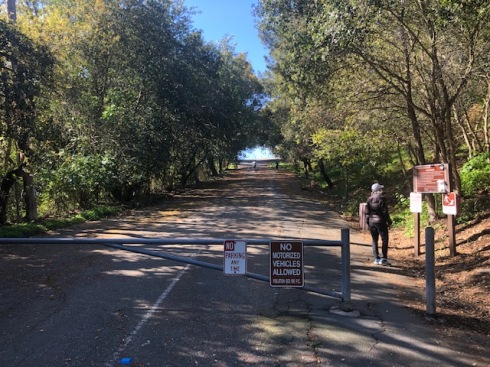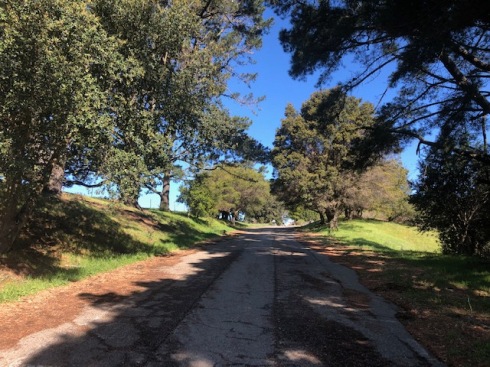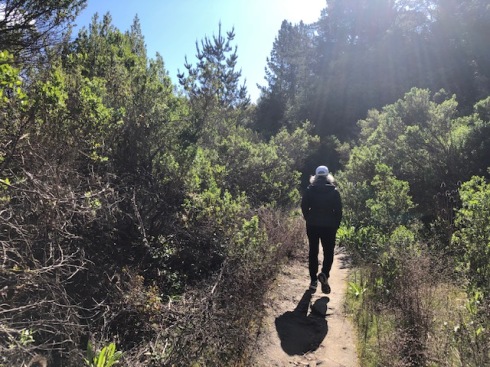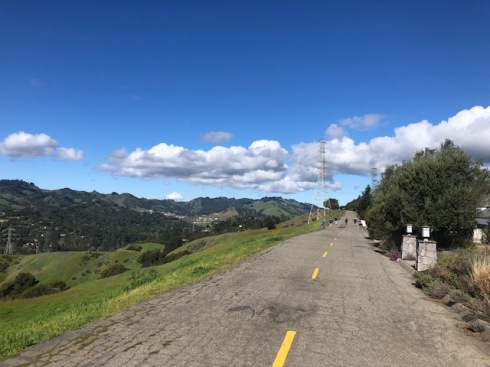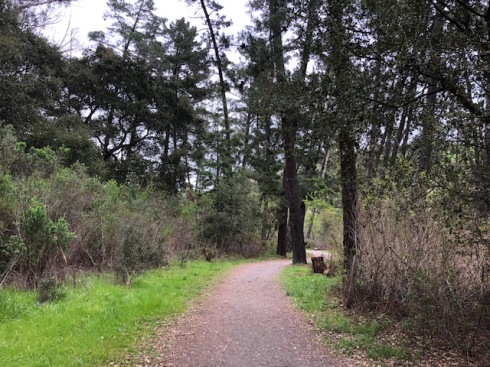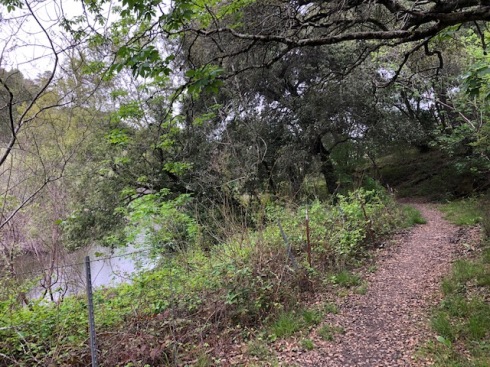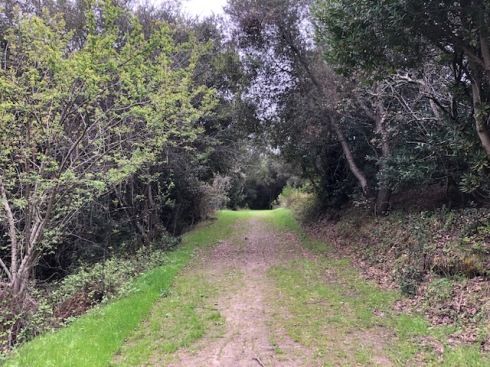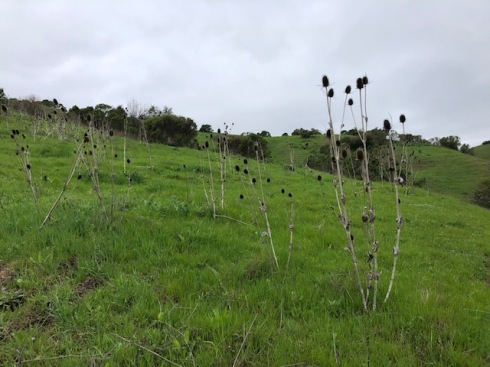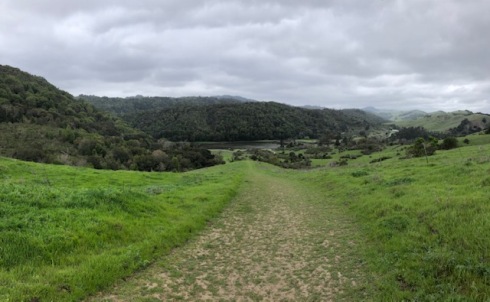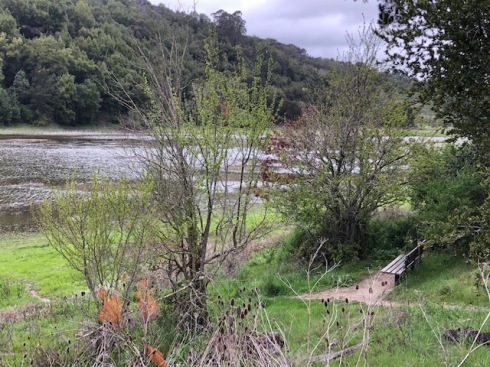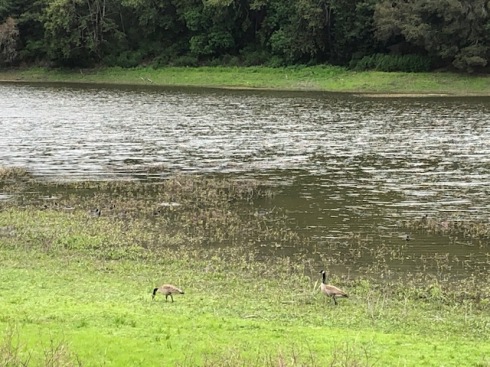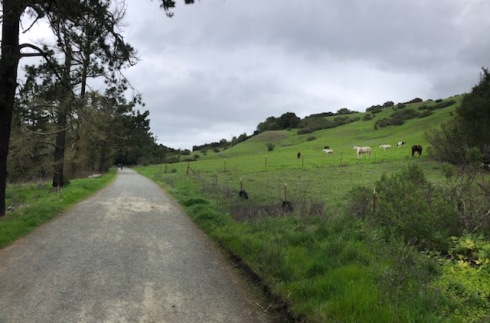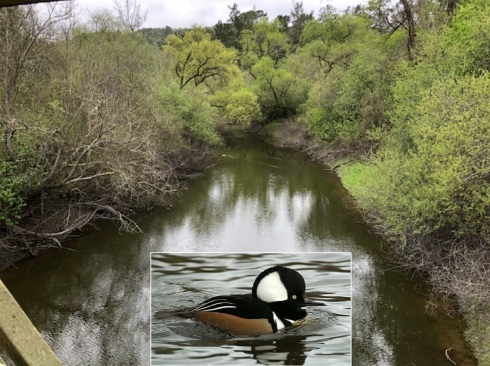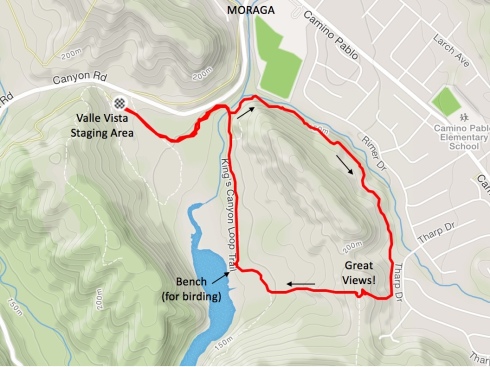Length: 1.8 miles
Time: 40 minutes
Difficulty: Easy
Dogs: Yes! Very popular place for nearby residents to take their dogs.
Calories: 250-300
Elevation Gain: 200 feet.
Best Season: Any season.
EBMUD Permit Required: No
Highlights: A surprisingly wild little open space in the middle of Burton Valley! The confluence of two creeks with a diverse array of native plants and excellent birding! A wonderful place to take family walks with kids and dogs.
Directions: Take St. Mary’s Road to the Lafayette Community Center at 480 St. Mary’s Road. Park in the back, near the playground.
Trailhead: East of the parking lot, you’ll notice a bridge with some signs. That is the entry to the Community Park and the beginning of your nature walk.
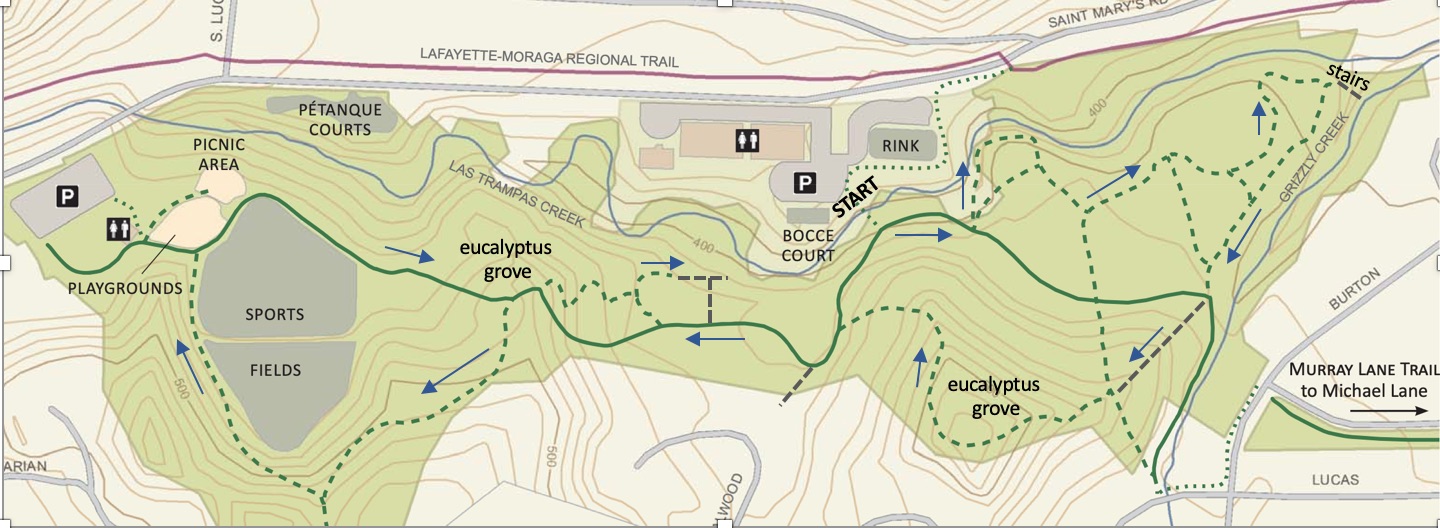
Map of Community Park and nature walk
The 68-acres of park lands was originally owned by CalTrans and reserved for a highway from Pleasant Hill to Oakland. Thankfully, due to strong public opposition, the plan was dropped and the city was able to buy it for a park in 1983. Now it is a beloved open space instead of a noisy, dirty highway! Some of the most treasured assets in Lafayette – Community Park, regional trail, new library, Town Hall Theatre, Community Garden – are all due to activated citizens! Our family lives just a couple blocks away and has walked in the Community Park hundreds of times.
Start by crossing the 140’ long Kathryn Peterson bridge over Las Trampas Creek. Kay Peterson is worth remembering. She started the Lafayette hiking group, was responsible for the first Lafayette Trails Master Plan, and was instrumental in obtaining the easements for most of our local trails. The creek under the bridge starts near the Las Trampas Regional Wilderness and runs adjacent to Bollinger Canyon Road and then St. Mary’s Road. It drains over 27 square miles of land area!
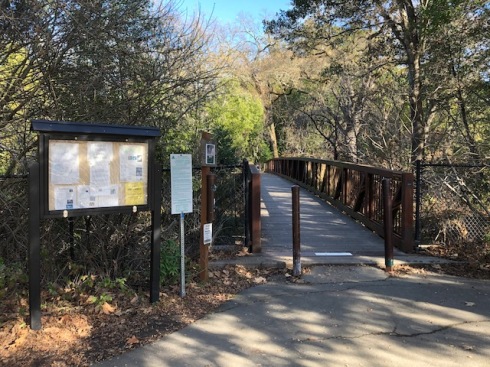
The Kathryn Peterson Bridge
The bridge is a great vantage point to view the dense riparian zone along the creek. You can actually see 10 different types of trees from the bridge (Coast Live Oak, Valley Oak, Fremont Cottonwood, Arroyo Willow, White Alder, Big Leaf Maple, California Buckeye, California Black Walnut, California Bay Laurel, and Coast Redwood)!
On the far end of the bridge, on the right side, there is a large Valley Oak. These trees are pretty amazing! They are endemic to California (especially the Central Valley), grow larger than any other oak, and live for up to 600 years. Their acorns fall in October and a variety of mammals and birds eat them, including the acorn woodpecker, California scrub jay, yellow-billed magpie, and California ground squirrel. And, of course, acorns were the staple food for the Bay Miwok who lived here.
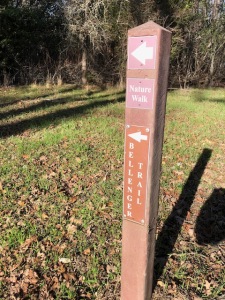
Sign for Bellenger Trail
Take a left, go about 50 yards, and then take another left on the Bellenger Trail. Stay left, even where the trail forks, and the trail will wind along the creek with a couple openings where you can see the water.
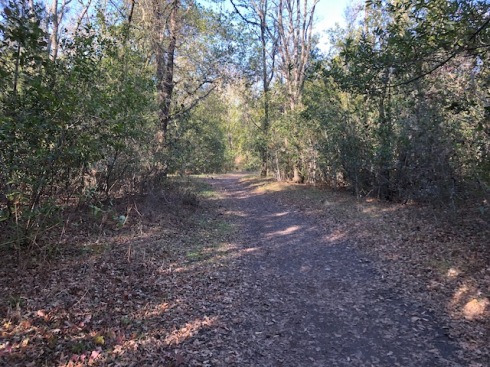
The Bellenger Trail
When you get to a sharp right turn and a poison oak sign, there are steps down to Grizzly Creek. This is close to where the two creeks combine and is a nice spot to stop for a minute.

Acorn woodpecker
Continue on and soon you’ll reach a major intersection of trails. Continue straight across, between two good sized oaks, and up the ridge (see picture). You’ll climb through a pleasant valley oak woodland. The most common year-round birds in this habitat are acorn woodpeckers, oak titmouse, scrub jays, red shouldered hawks, and towhees.
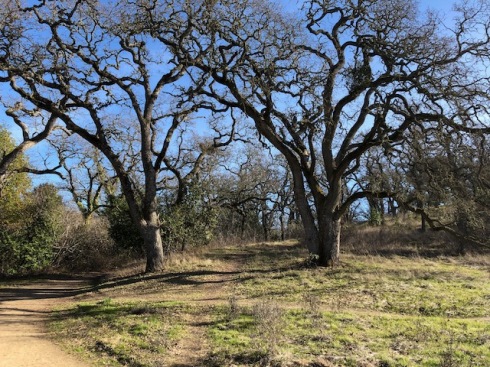
Go up the ridge between these two valley oaks
Keep going up, passing a marvelous bench, until you reach the eucalyptus grove. Starlings love to hang out here. Continue through and enjoy the views as you descend down the other side.

Eucalyptus grove

Enjoy the views on the way down!
When you reach the wider trail at the bottom take a left. This is the main trail through the park. As you go around a bend, stay to the right. Soon you will see a small trail on the right side. Save that for later, and instead take the second trail on the right. If you’re on the correct one there will be a bench right away on the left. Wind your way up the hill and watch out for poison oak in this section.
At the top you’ll see a second eucalyptus grove on the right. When our kids were little I tried to convince our youngest son and his friends that a dragon guarded a buried treasure in the middle of the grove by snoozing in a hammock above it. They went crazy when I actually buried a treasure and gave them a map!
Take a left on the fire road that goes along the side of the hill. Going clockwise, make a loop around the sports fields to return to the same spot (see map).
On the way back, pause at the top of the stairs to look or listen for birds. This is one of our oldest son’s favorite spots for birding. In the spring, you have a good chance of seeing Western Tanagers, Black-headed Grosbeaks, Vireos, Warblers and a myriad of other songbirds. This a great spot because you can see right into the canopy of the oak woodland giving you a great angle to see illusive canopy dwellers like Western Tanagers.
Then wind down the hill the way you came up, except at the bottom look for a small trail that veers off to the left. Take that and continue into a pleasant grove of California Buckeye trees and check out the overlook over the creek. Then backtrack and take the small trail out to the main artery again.
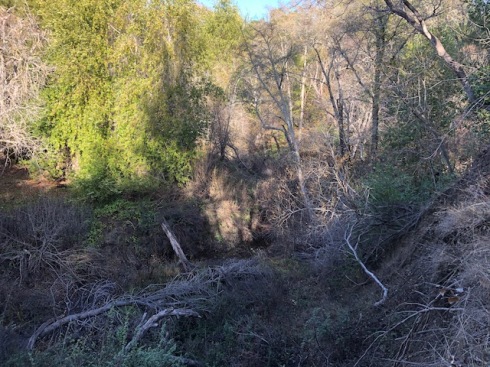
View of Las Trampas Creek from Buckeye grove
Go left and return to the bridge to complete the walk.
Some additional resources:
Information about the Community Park on the city’s web site, including a list of trees, shrubs, birds, reptiles, mammals, and amphibians that can be found in the park. Click here…
Community Park brochure and map
Information about native bee houses that you’ll see in the Community Park. Click here…
Golden Gate Audubon – who organizes birding outings, including ones to the Lafayette Community Park. Click here…
Tags: Birds, burton valley, community park, creek, eucalyptus trees, nature trail, oak trees
